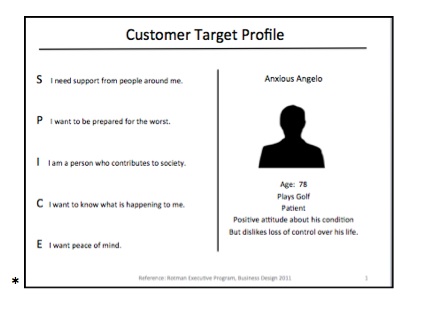Putting Your Customer First
It was Steve Jobs' mantra…. Coca Cola is living it now.
In a world where competition is getting more intense and customers are becoming savvier, putting the customer first has never been more important.
But what does “Putting the customer first” really mean? And how do you do it?
We could learn a few things from the business design world.
Consider integrating the following three business design approaches into your planning process and you will begin the journey of putting your customer first.
1. Customer Understanding
It all starts with understanding what your customer thinks and feels on a “human level." Analytics and quantitative research will provide insight into attitudes and behaviours, in other words, what people think and do. Analytics will not explain why people think or behave the way they do. Understanding their underlying motivations is the first step to uncovering unmet needs.
In-depth interviews and ethnographies are good approaches to gain deeper insight about your customer. Ethnography is a particularly effective method in teasing out the differences between what customers say they do and how they really behave.
2. Target Definition
Once your research is complete create a profile of your target customer in “human terms”. This requires understanding their S.P.I.C.E. needs. These are their social, physical, identity, communication and emotional needs.
S.P.I.C.E. needs are not specific to any brand or category, but have universal application for the target customer. Bring the target customer to life by creating a persona.
Personas are fictional characters that bring the S.P.I.C.E. needs to life. Personas help teams keep “real people” at the centre of the discussion and frame the business challenge in more human, holistic terms.
I have always found teams more “customer centric” in their approach to solving business issues when they use personas, because they see them and can relate to them as real people.

3. Translate into Business Opportunities
Now with the persona in mind, create a product idea or service that better meets your target customers needs.
Consider his or her S.P.I.C.E. needs. Ultimately your product or service idea should address most if not all of these needs.
Identify how your target customer interacts with your product or service by mapping out their journey over a specified period of time.
Create a journey map using the following steps:
a) Create a timeline, which represents a reasonable amount of time for your target customer to interact with the product or service. Include the path to purchase as well as the post usage experience.
b) Along the timeline plot out the major stages where your target customer interacts with your product or service.
c) Build out the experience by articulating the logical progression of events that occur.
After completing the journey map, identify business opportunities by addressing your customer’s pain points along their journey map. Customer pain points come in several forms:
*Misalignment between their S.P.I.C.E. needs and their behaviour
*Non-value added steps or features of your product or service that do not address S.P.I.C.E. needs
*Customer “workarounds," which are extra steps that customers add to their journey to address a non-optimal product or service experience
Once your journey map is created and pain points are identified go back to your target customer to check for relevance and validity. By incorporating these three business design approaches you will be well on your way to putting your customer first.
*Reference: Rotman Executive Program, Business Design 2011.

